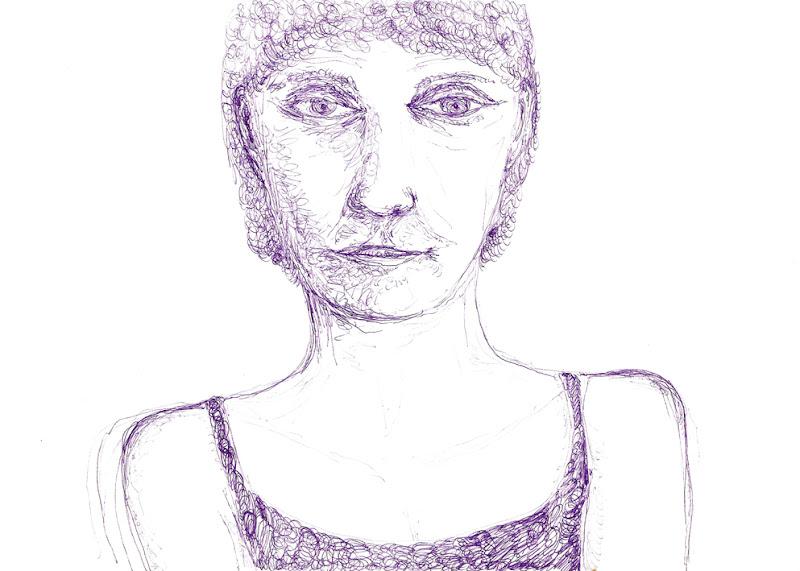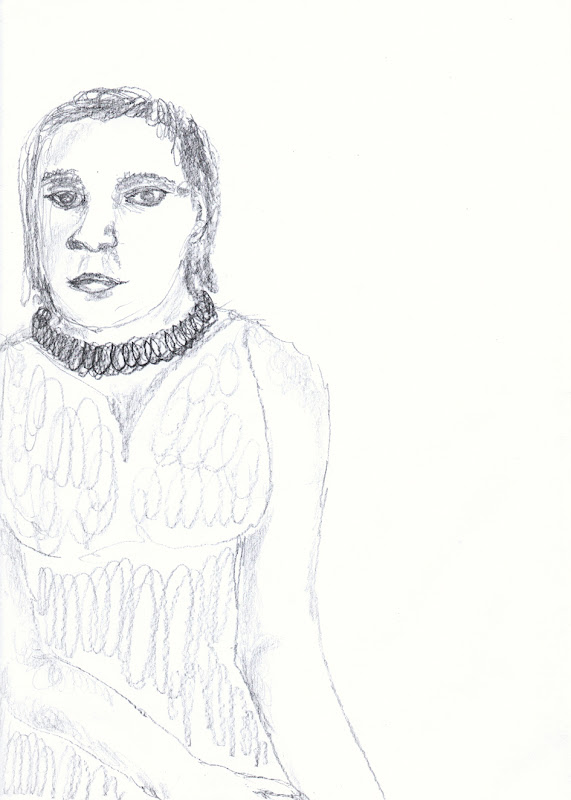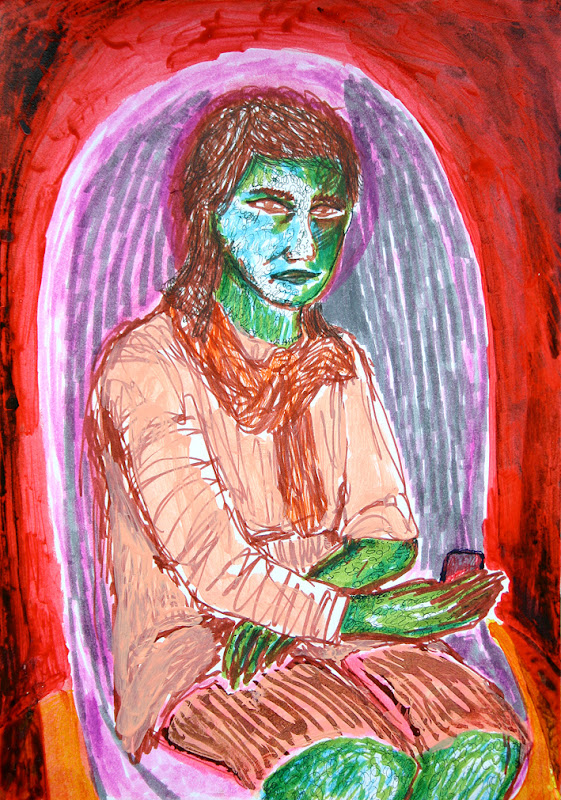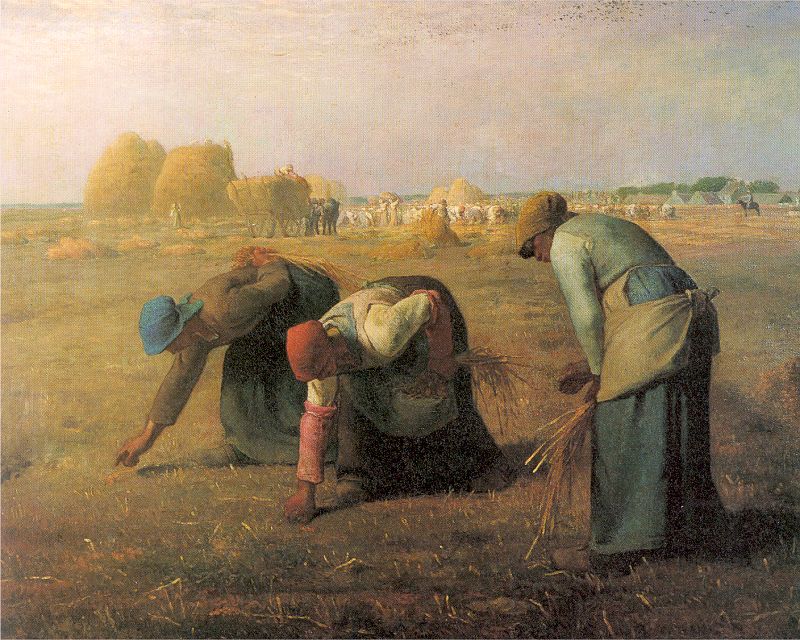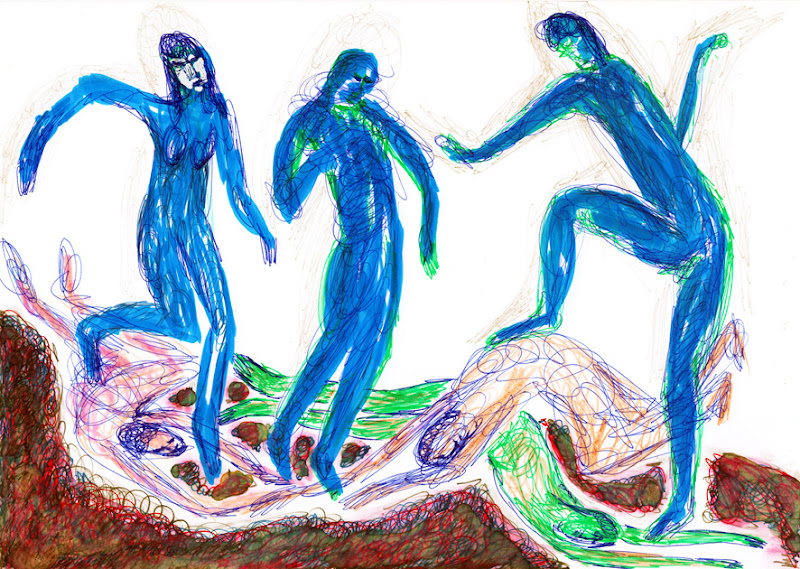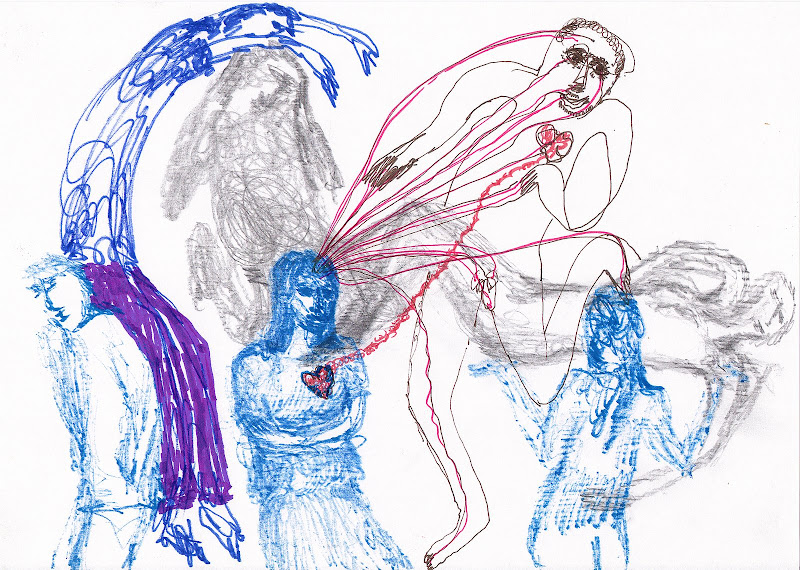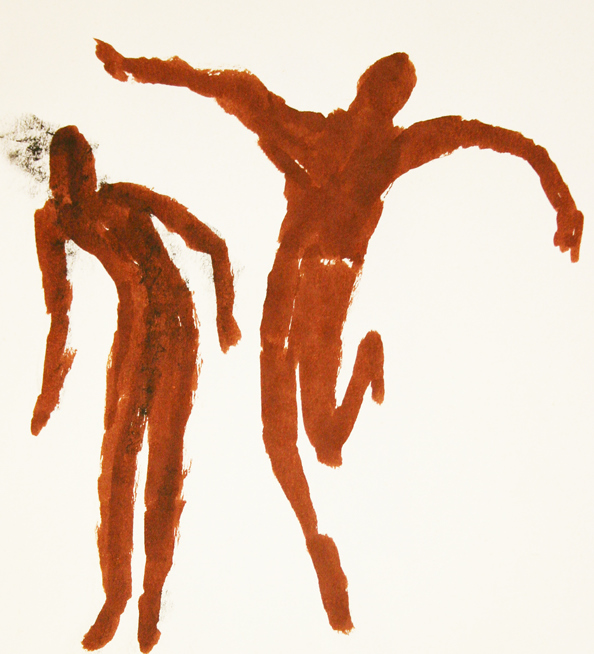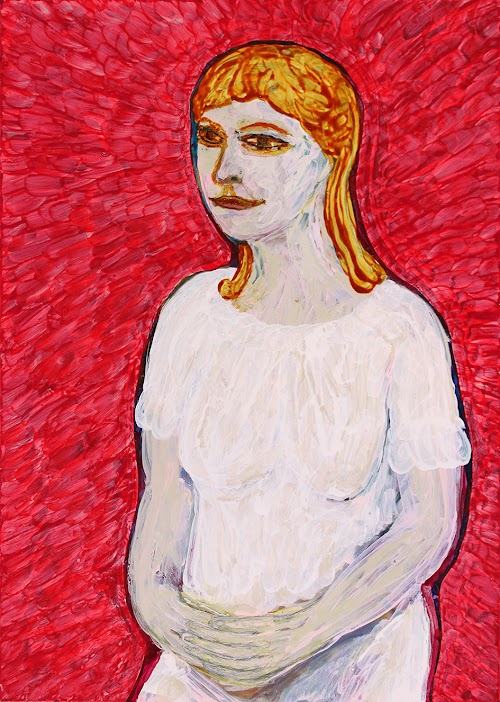
notre dame des anges (radiant) (own work, 2011-2014, 55 x 80 cm, click on the image for an enlargement)
repeated from the previous post: the woman portraits made in this series share the name `notre dame des anges´. this is a reference to the `medieval´ spirituality i mentioned above. but the portraits are of course not a depiction of maria. they are intended as portraits of contemporary women emanating this type of spirituality which i find hard to describe.
in this series i experiment with all sorts of visual elements. georgia o'keeffe (one of my all-time favourite artists) said:
“I found I could say things with color and shapes that I couldn't say any other way - things I had no words for."
(o'keeffe is just amazing, as an artist and as a person, and fits very well in the subject of this post, but i will devote a separate post to her in the foreseeable future.)
anyway, in this post i will show some of my experiments using paint. you will see that i do not shy away from outsider-like techniques. at the same time, i'm also studying the human form and body, as a means of expressing spirituality, vulnerability, openness, unarmedness etc. (this will lead to a next post on nudity in art, and double standards in society)
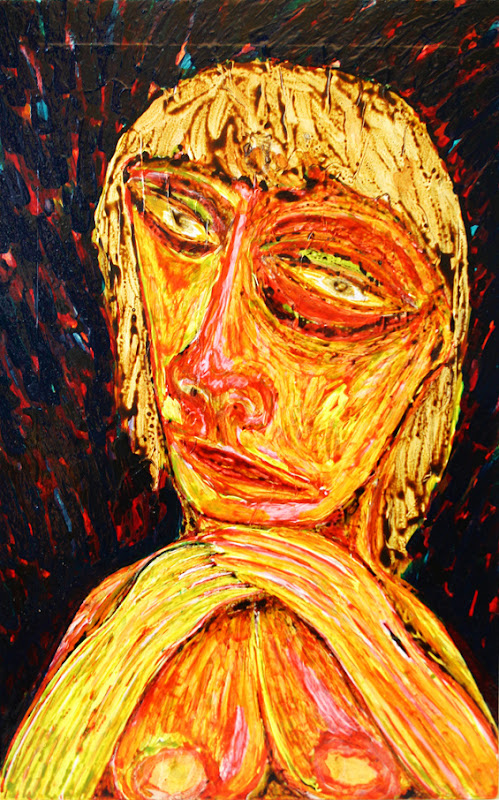
notre dame des anges as outsider (own work, 2010, click on the image for an enlargement)

notre dame des anges (déshabillée) (own work, 2011, 50 x 90 cm, click on the image for an enlargement)

notre dame des anges at night ii (own work, 2010, 30 x 30 cm, click on the image for an enlargement)
the colours of the above work are impossible to photograph, it seems, so i have little hope that what appears on your screen resembles the original enough, sorry. the same actually holds in a somewhat lesser but still annoying degree for most of the works in this post...one day i will arrange for a really good camera, and really good lighting conditions.

notre dame des anges (curly red hair) (own work, 2008-2012, 30 x 30 cm, click on the image for an enlargement)

notre dame des anges at night i (own work, 2003-2009, 30 x 40 cm, click on the image for an enlargement) (i posted this one earlier)

notre dame des anges (green hair) (own work, 2003-2009, 30 x 40 cm, click on the image for an enlargement) (i posted this one earlier)
